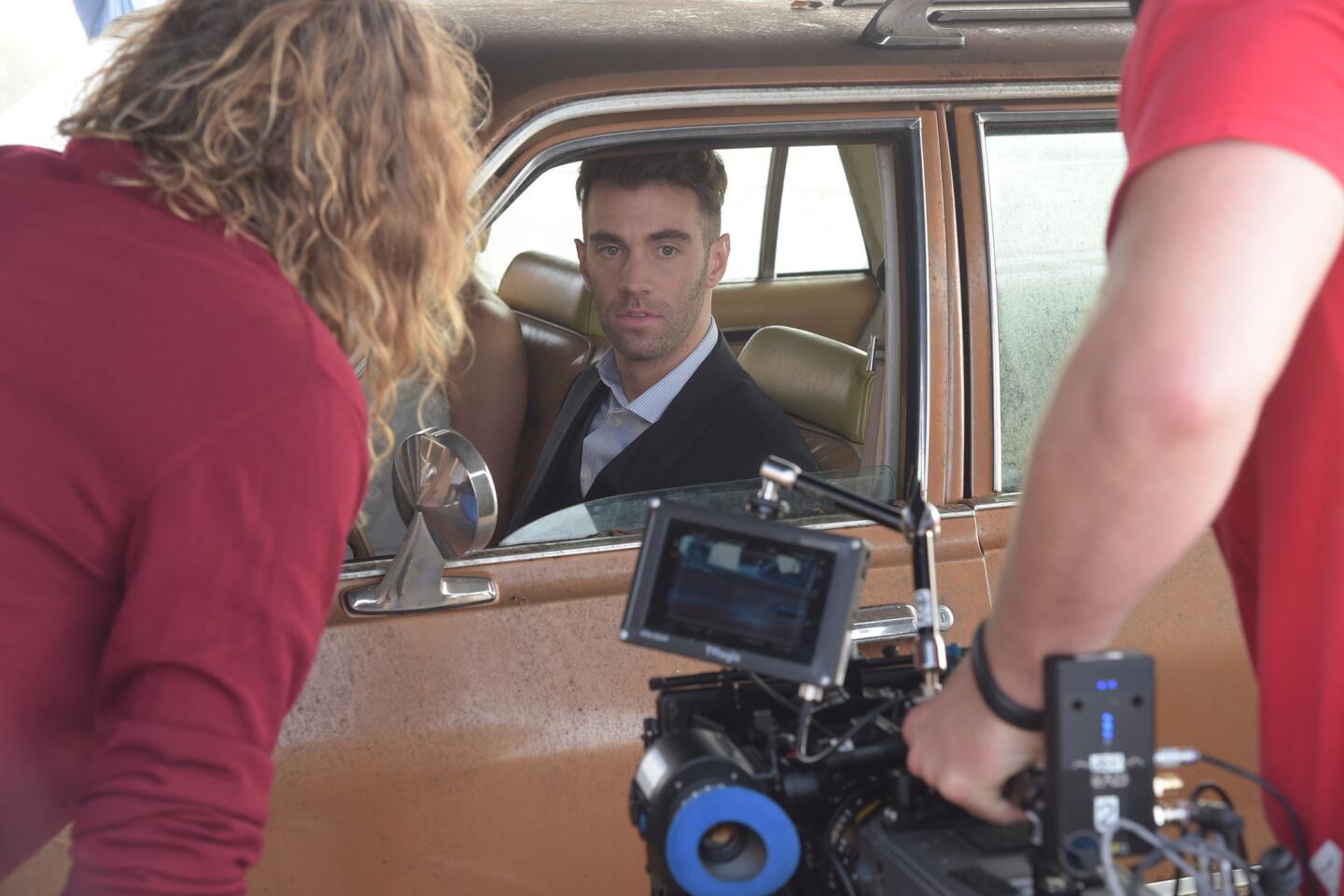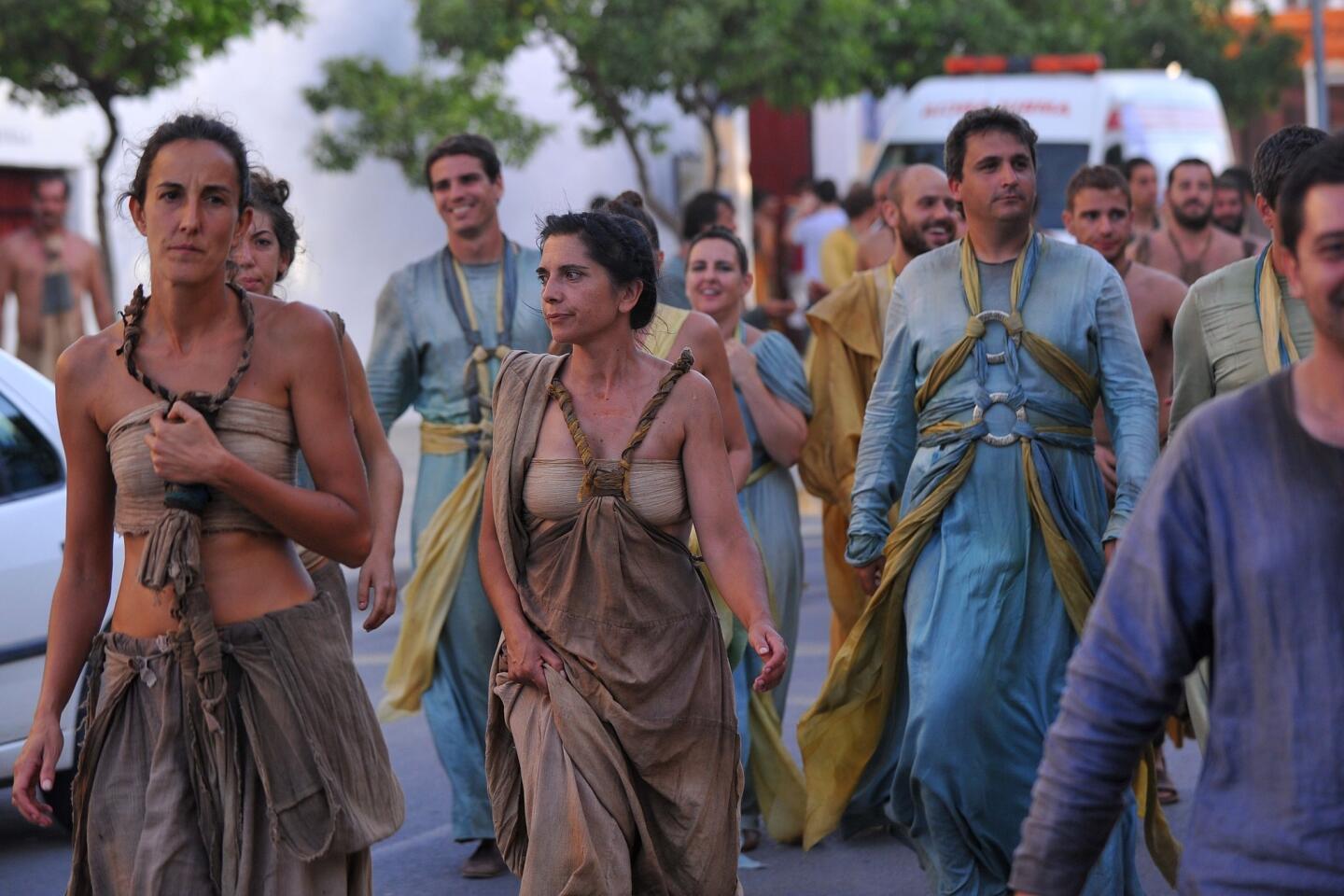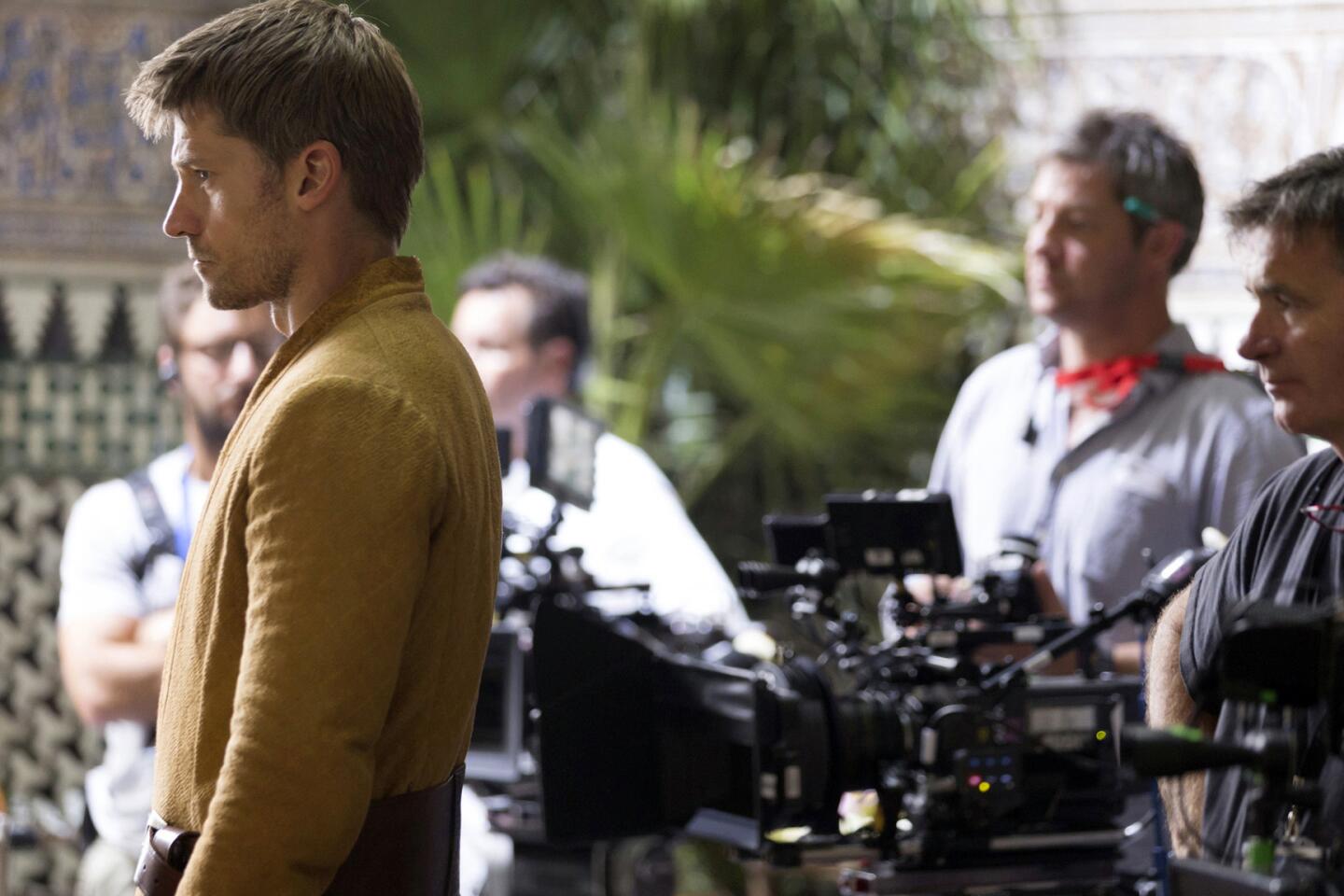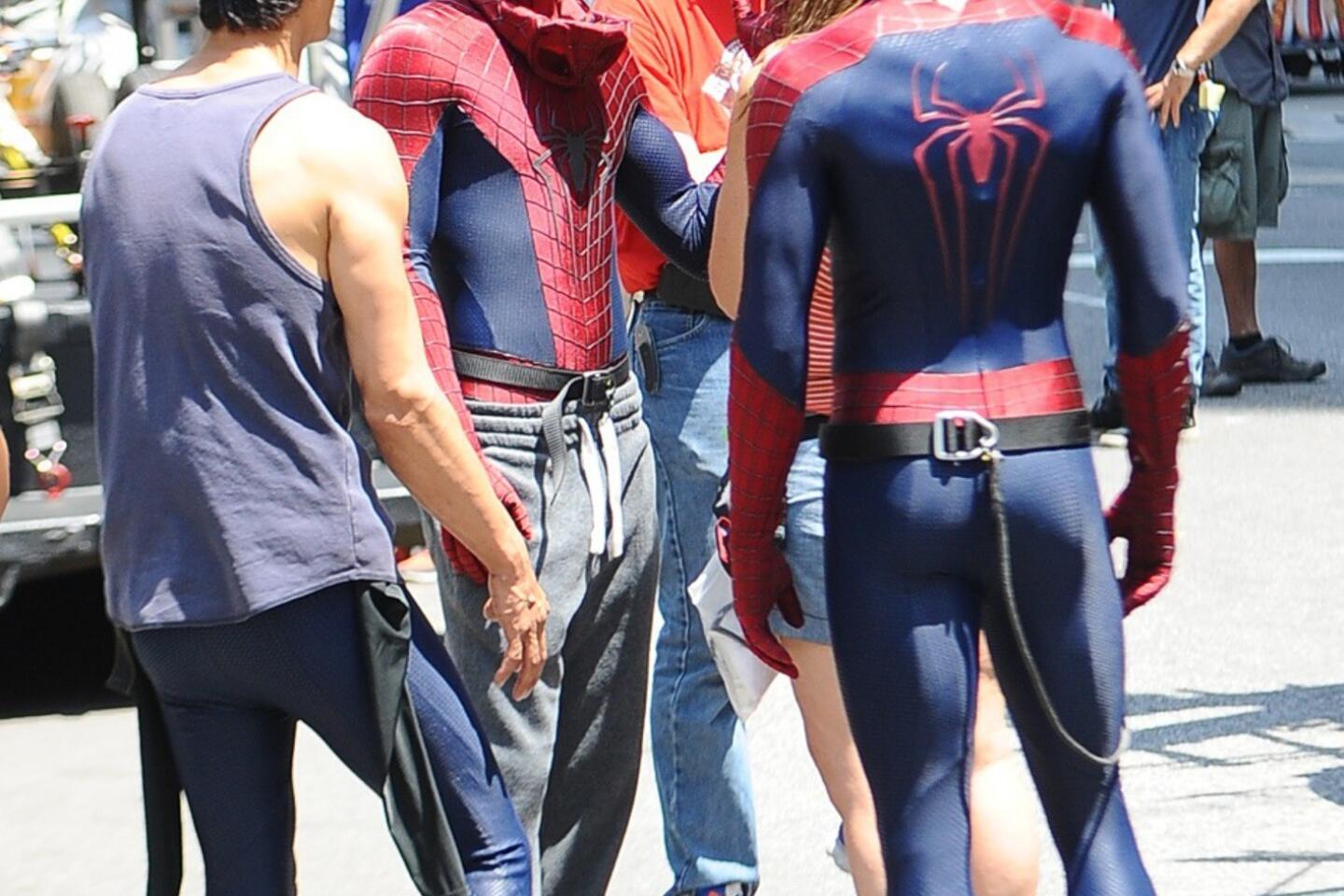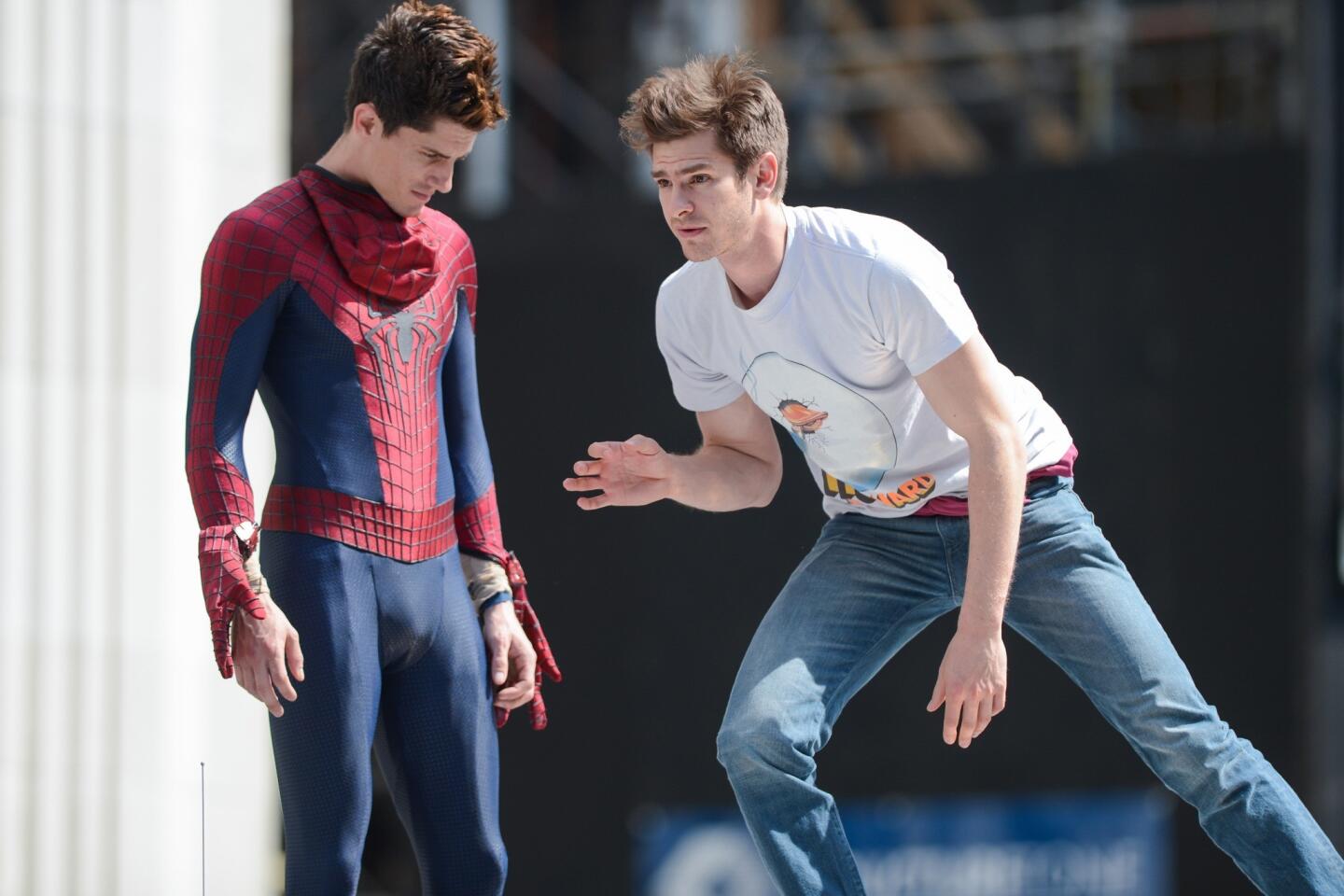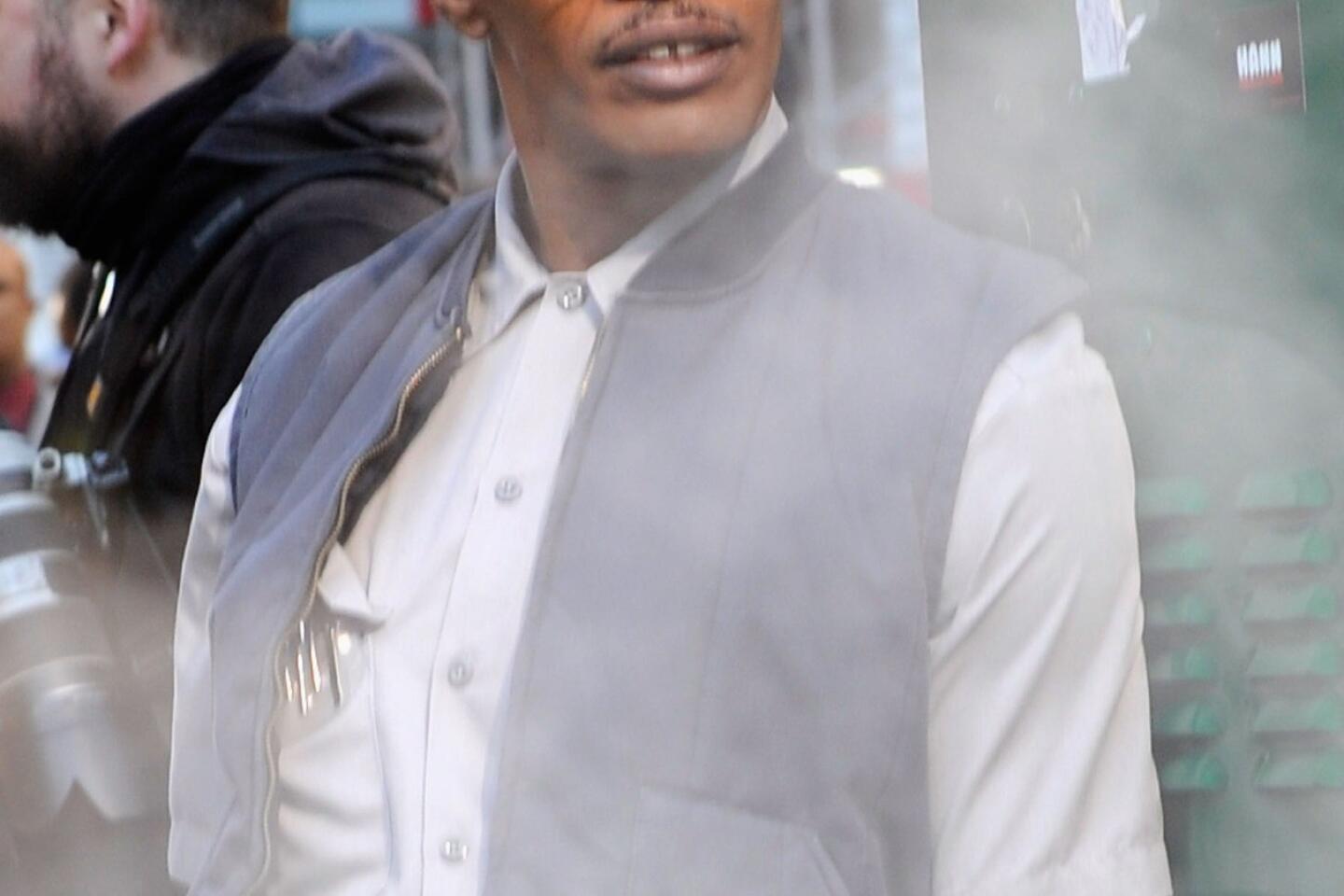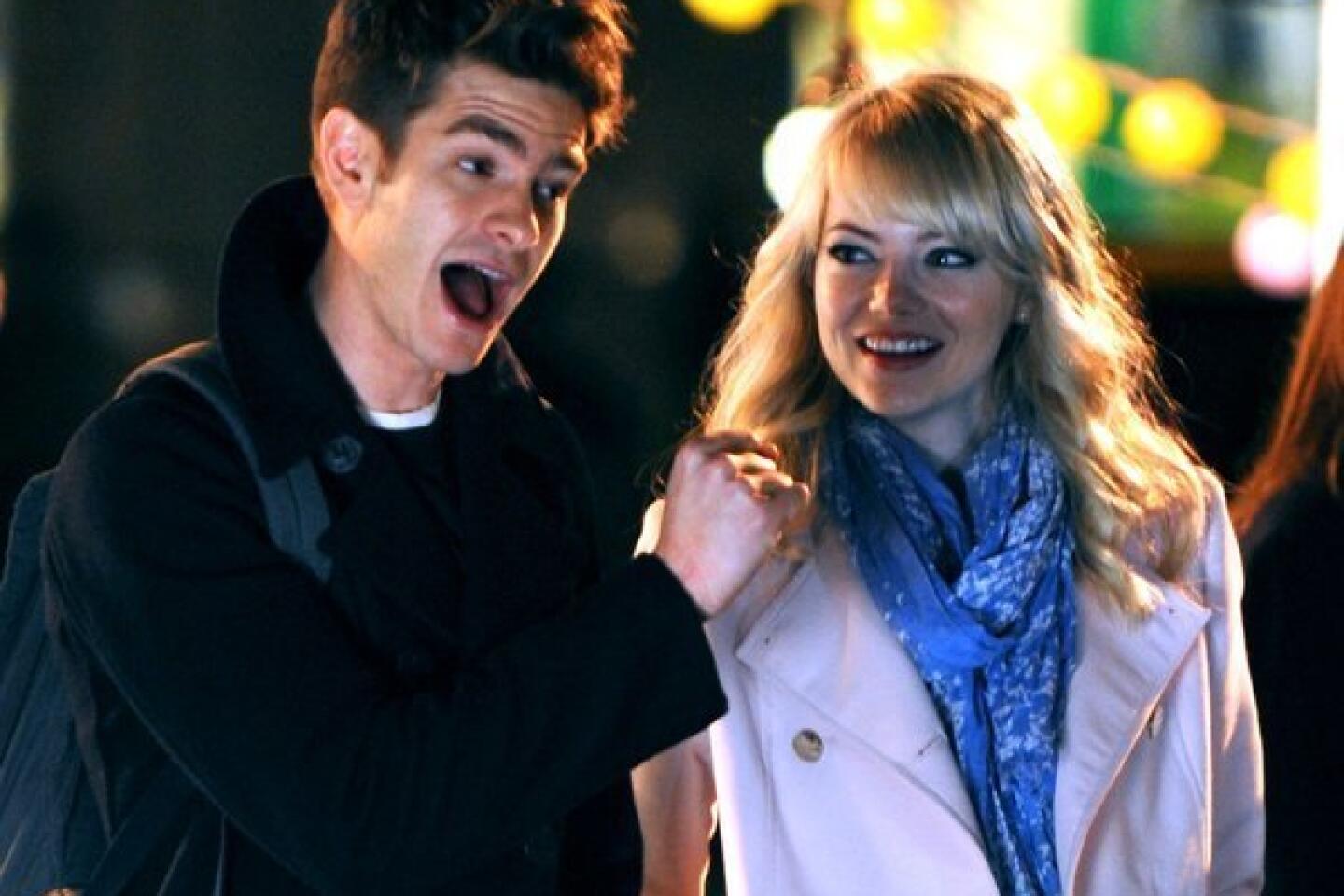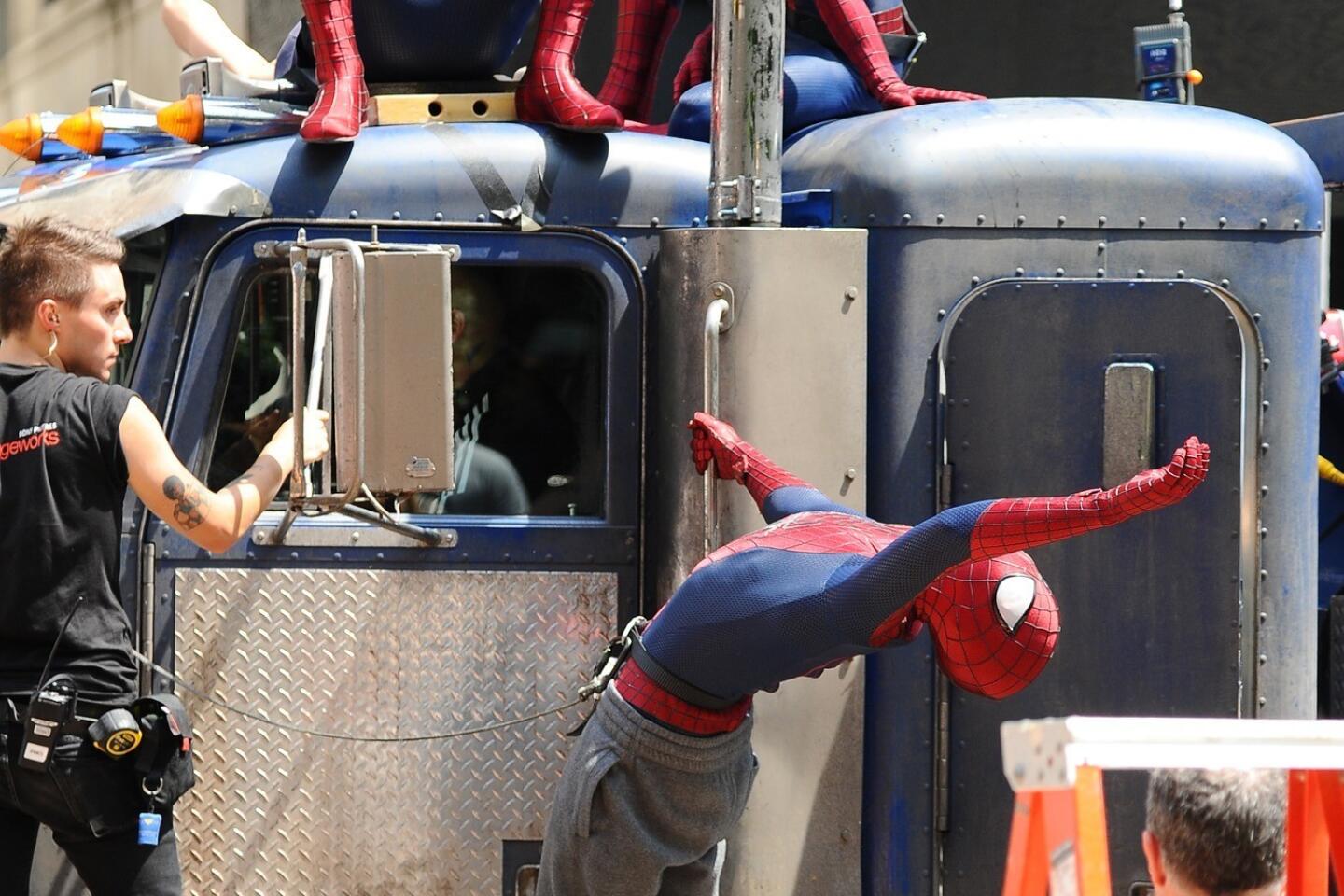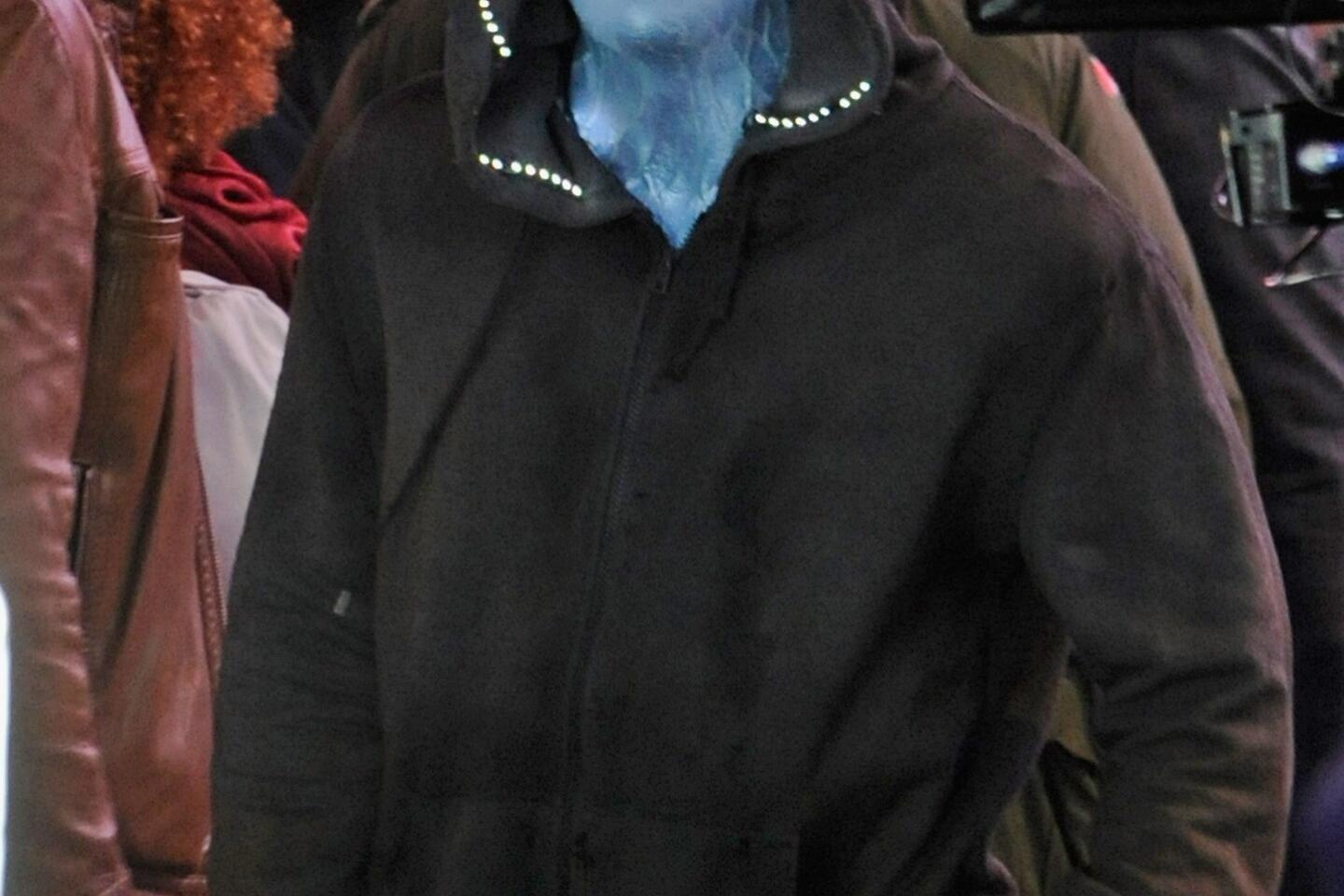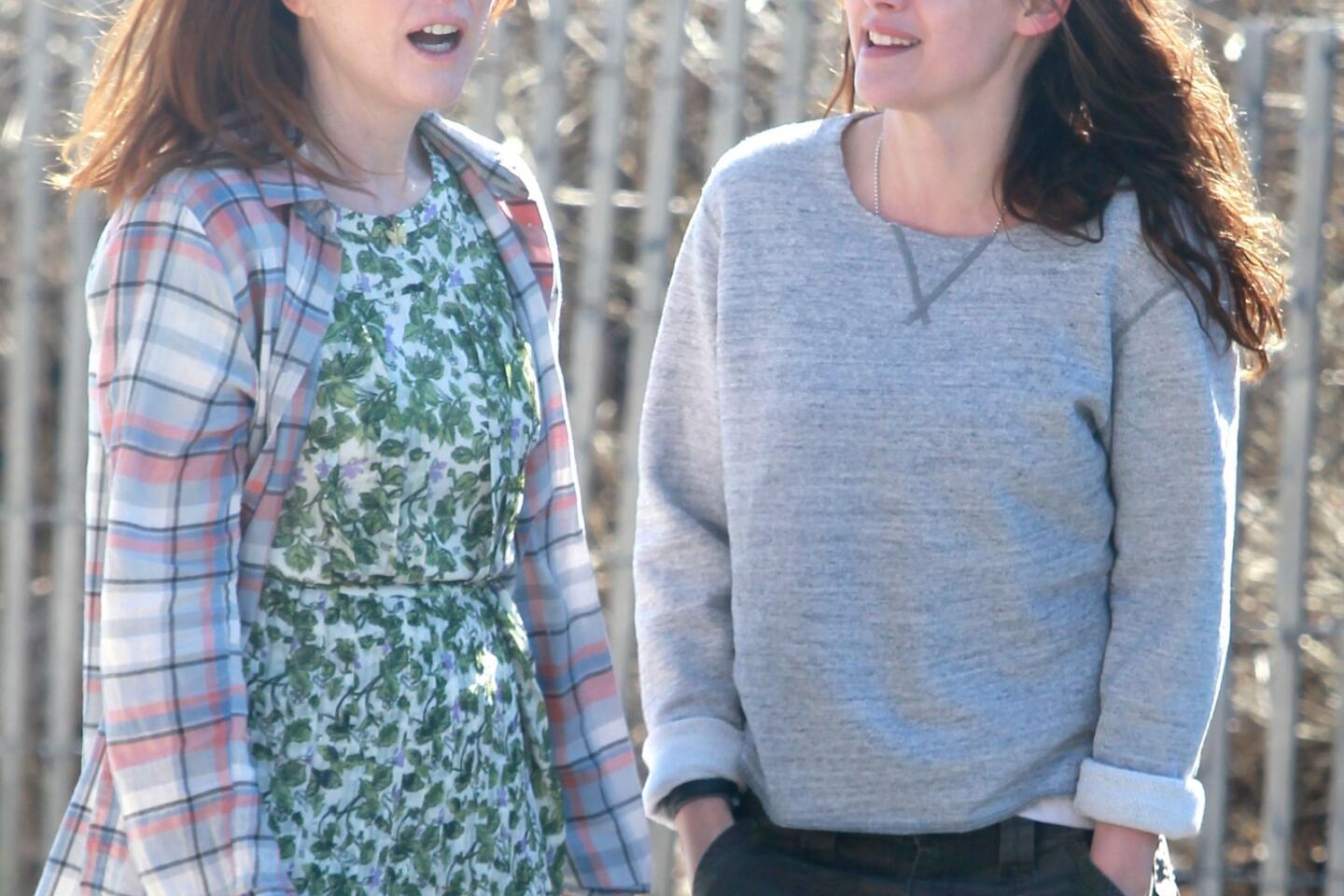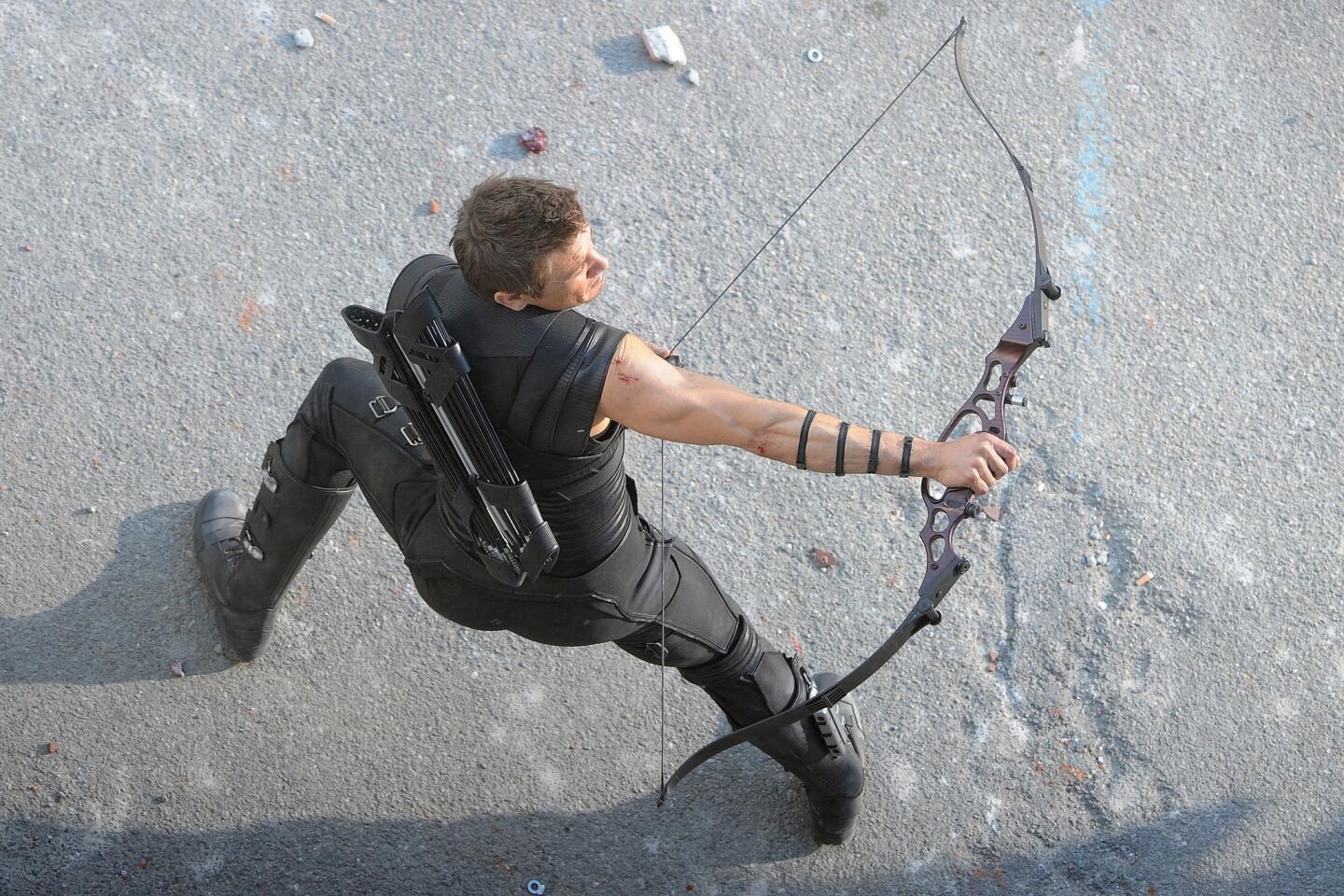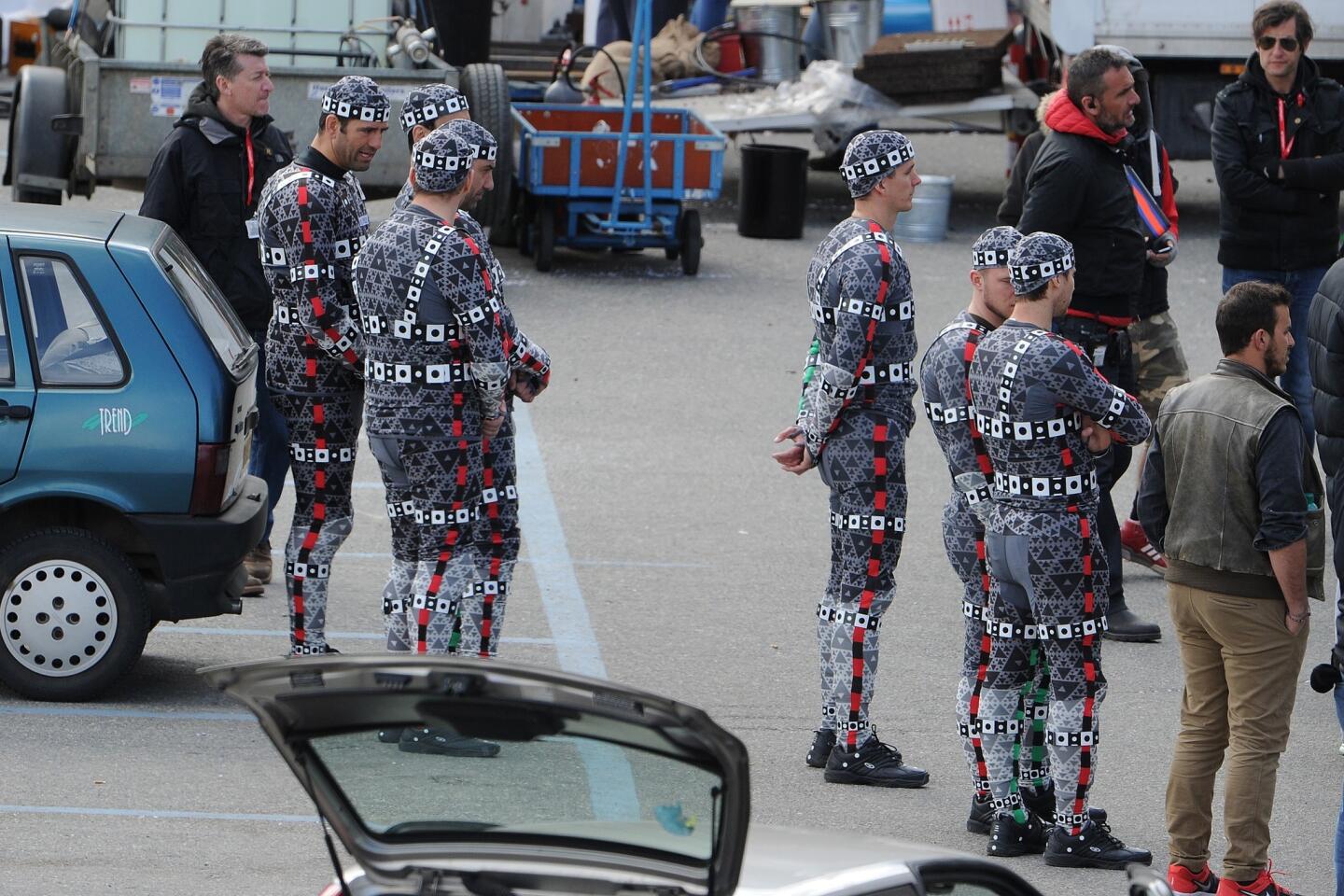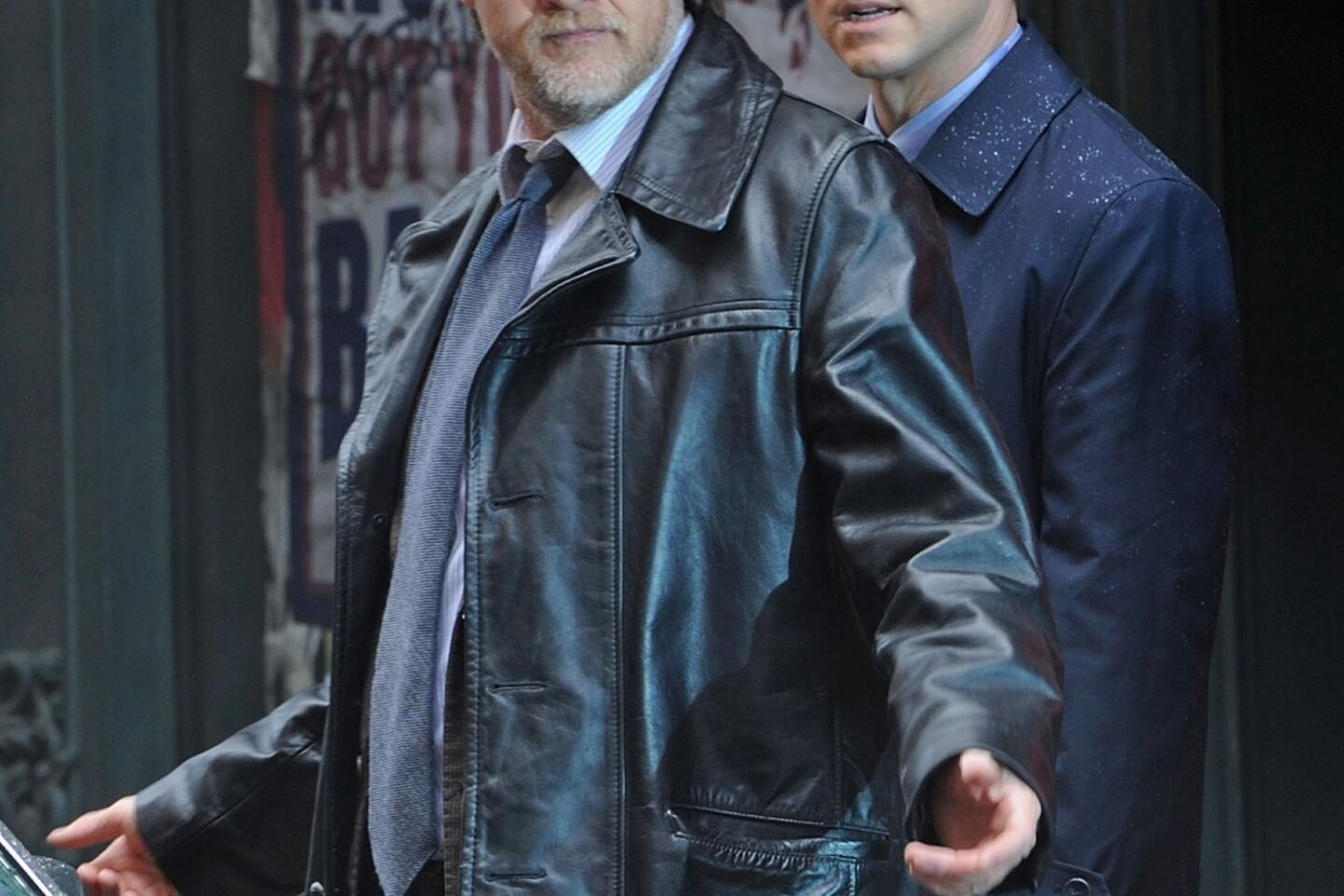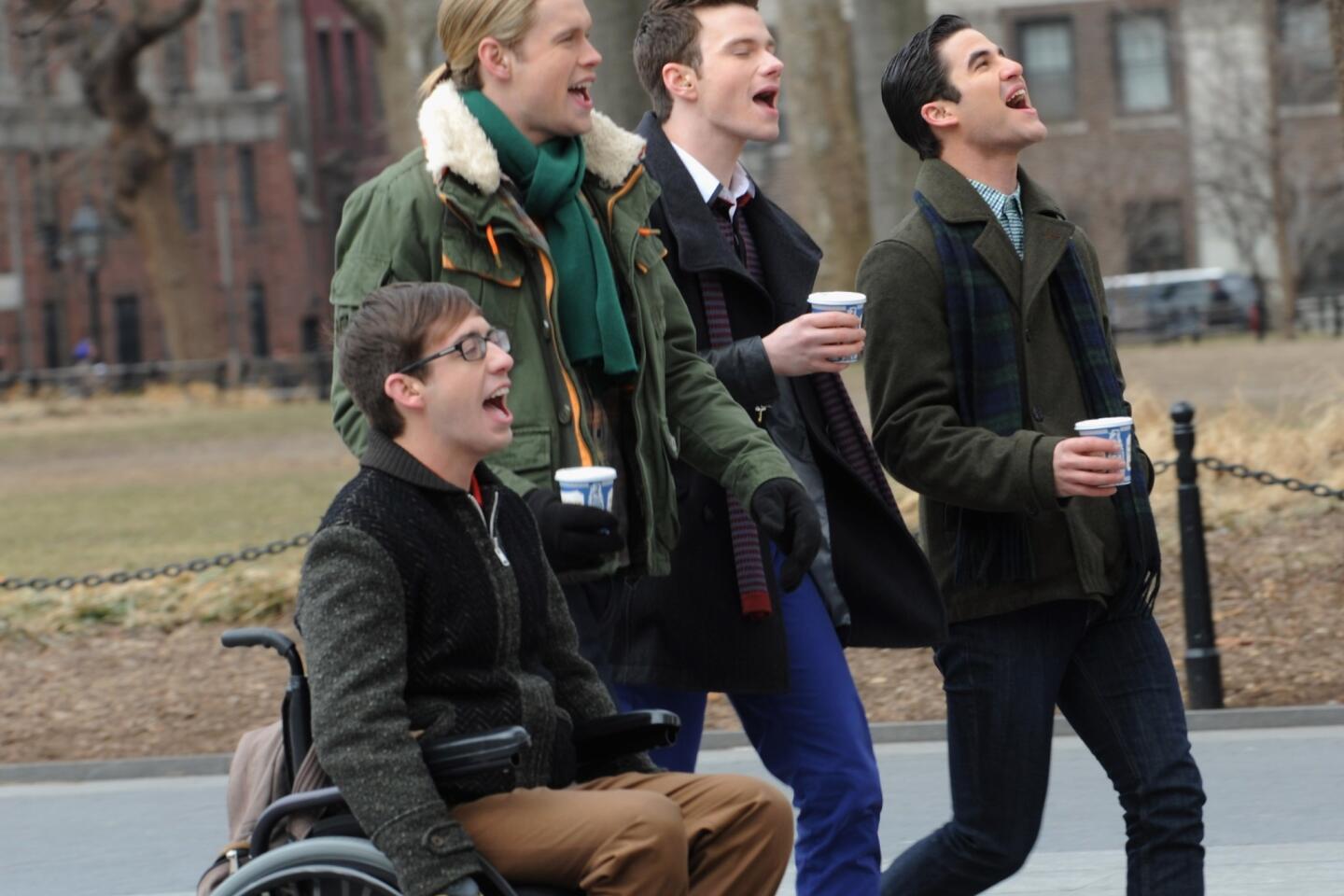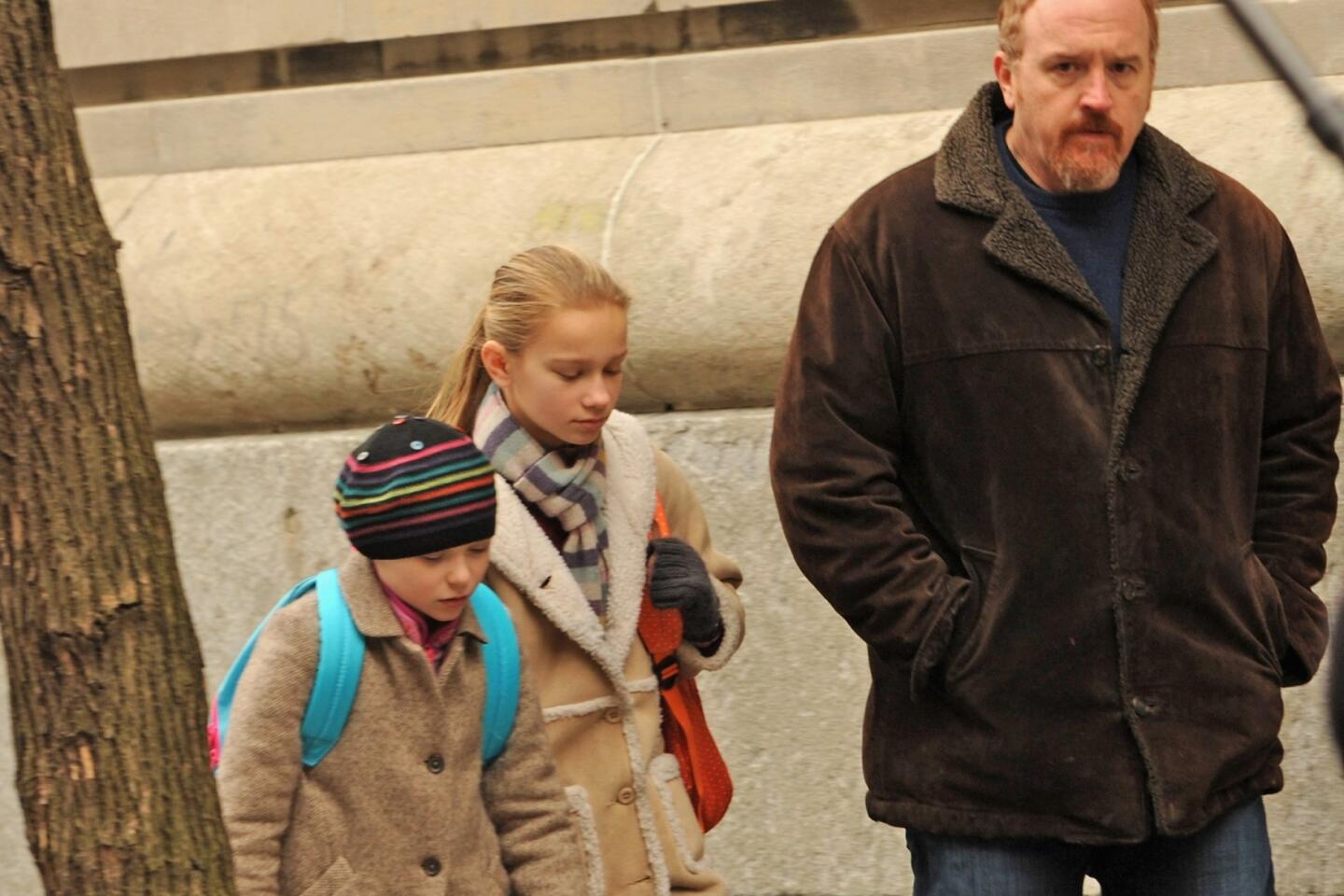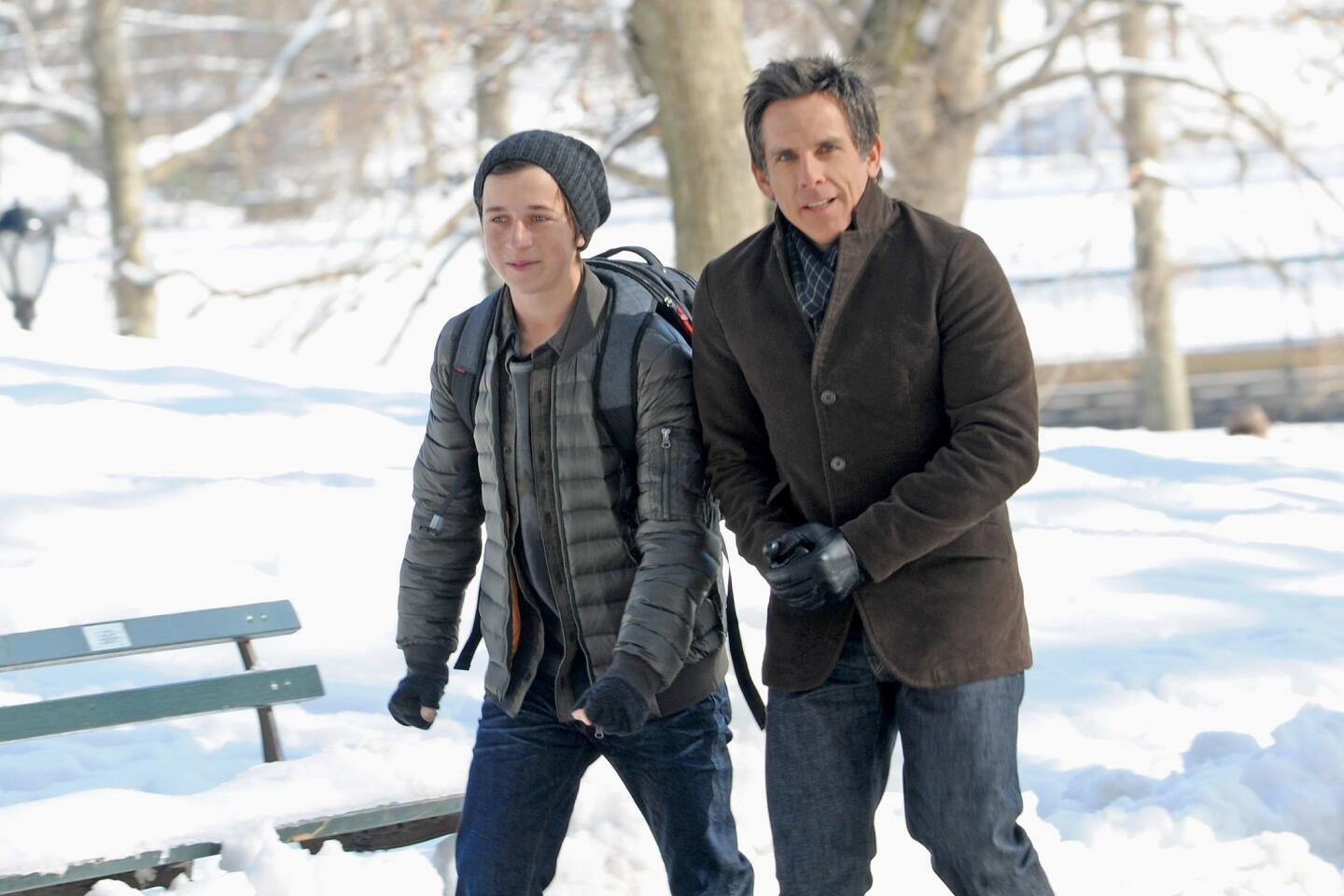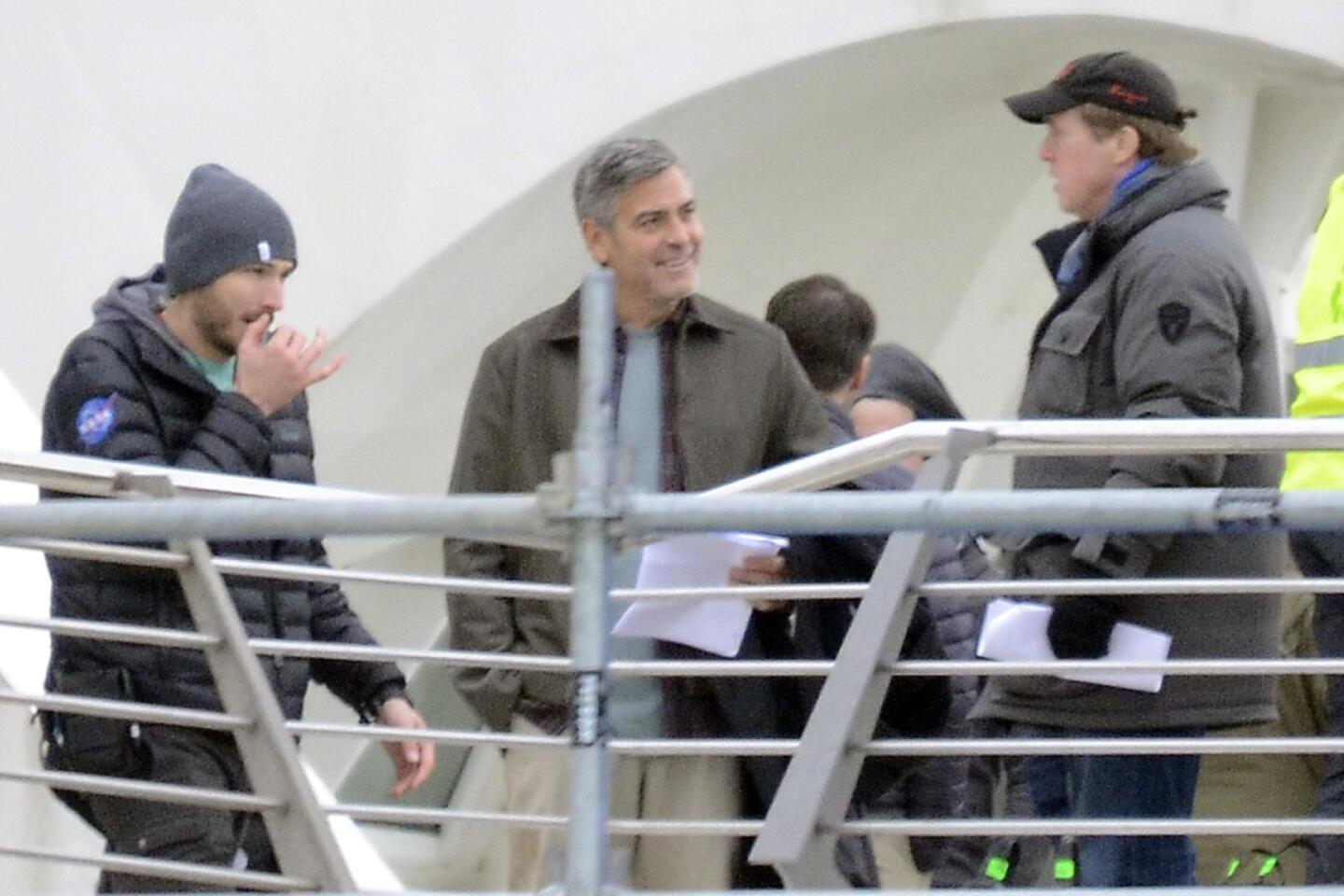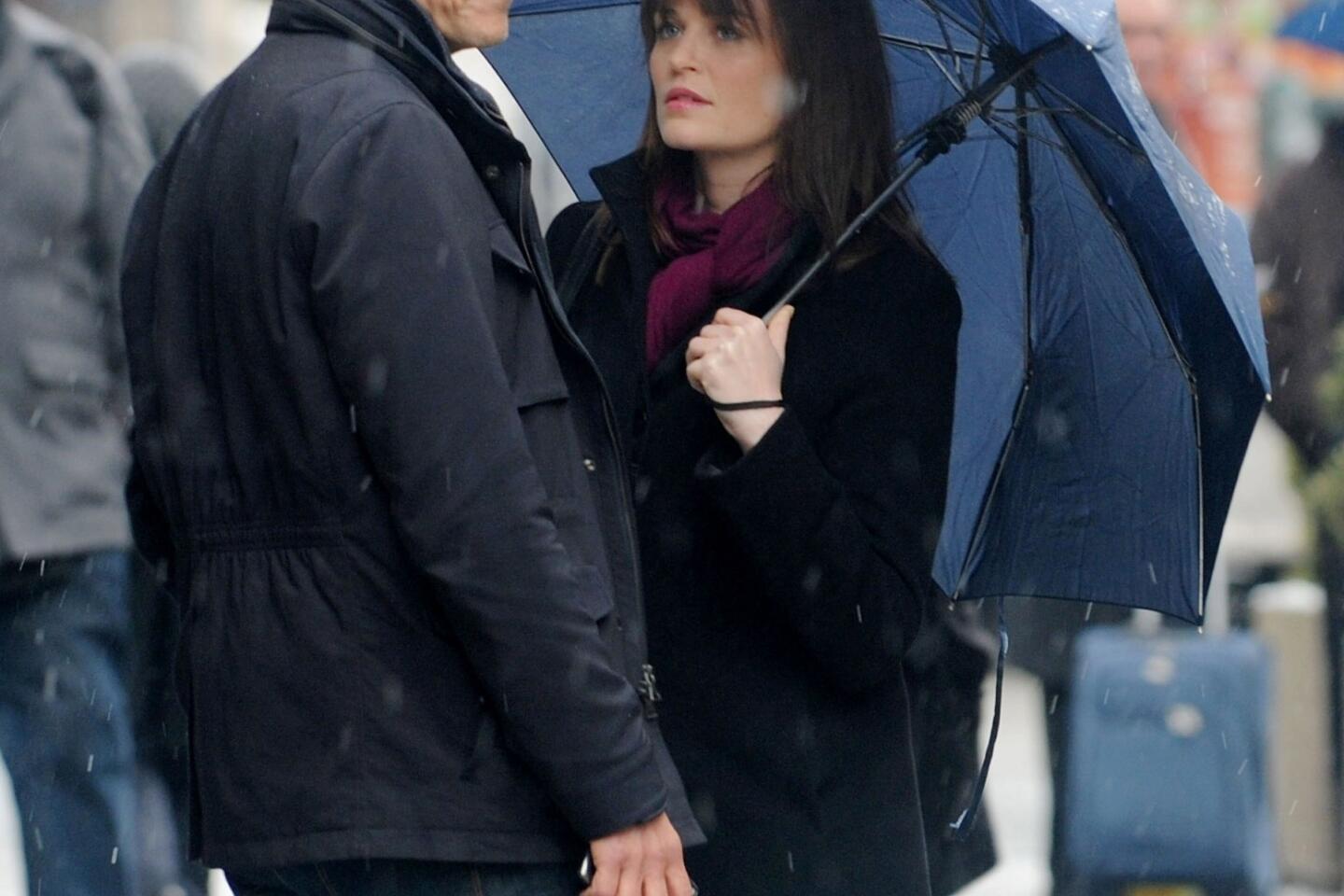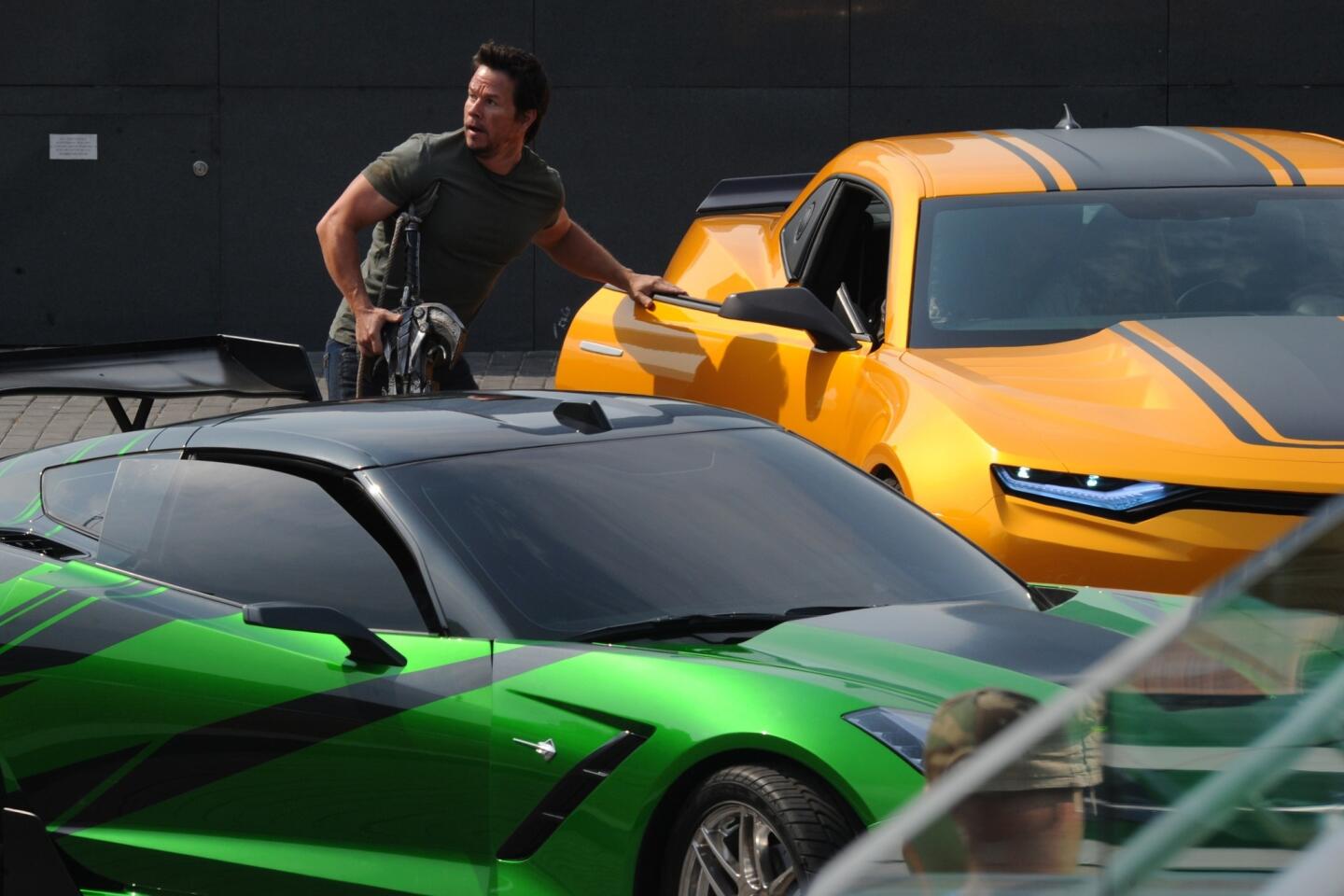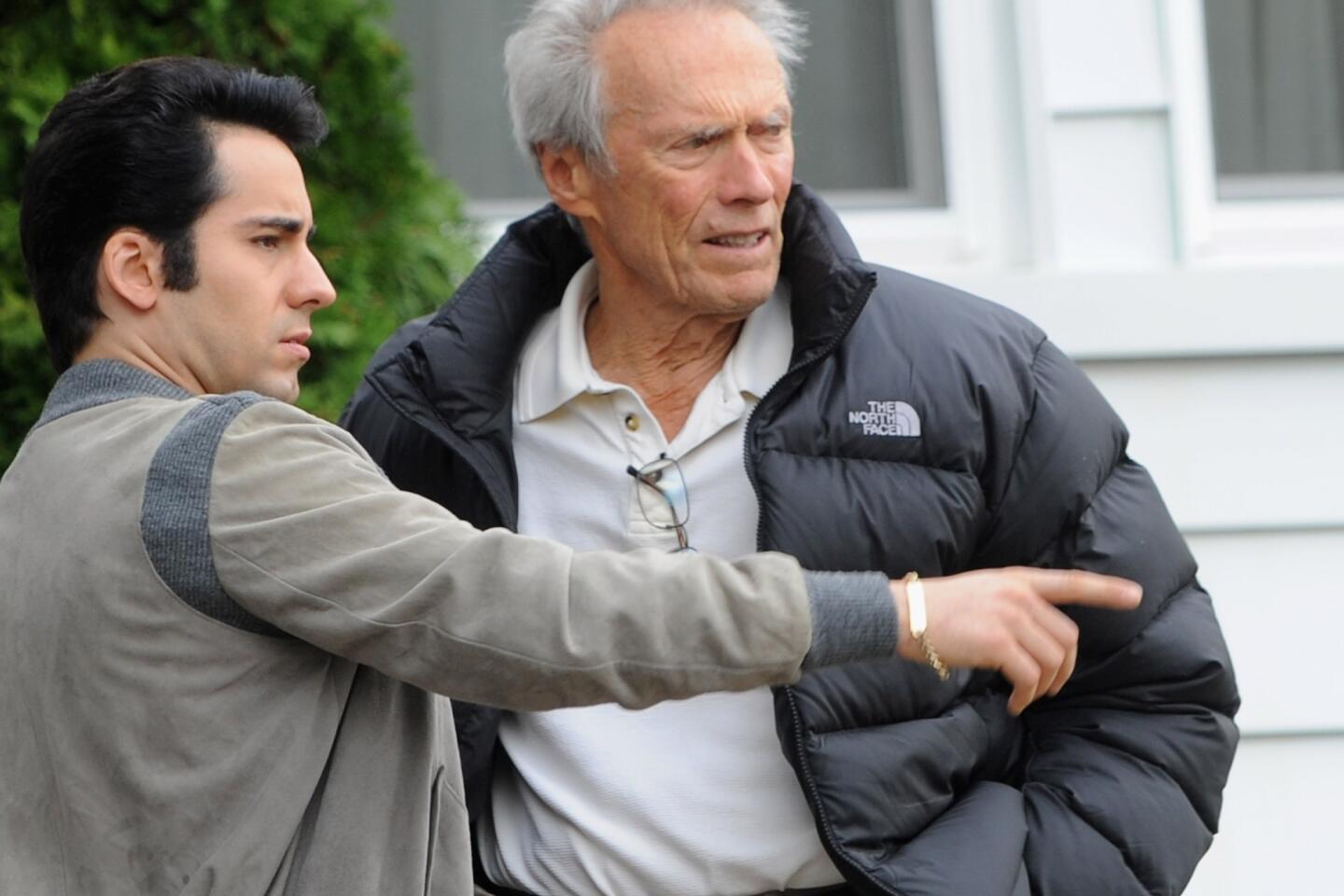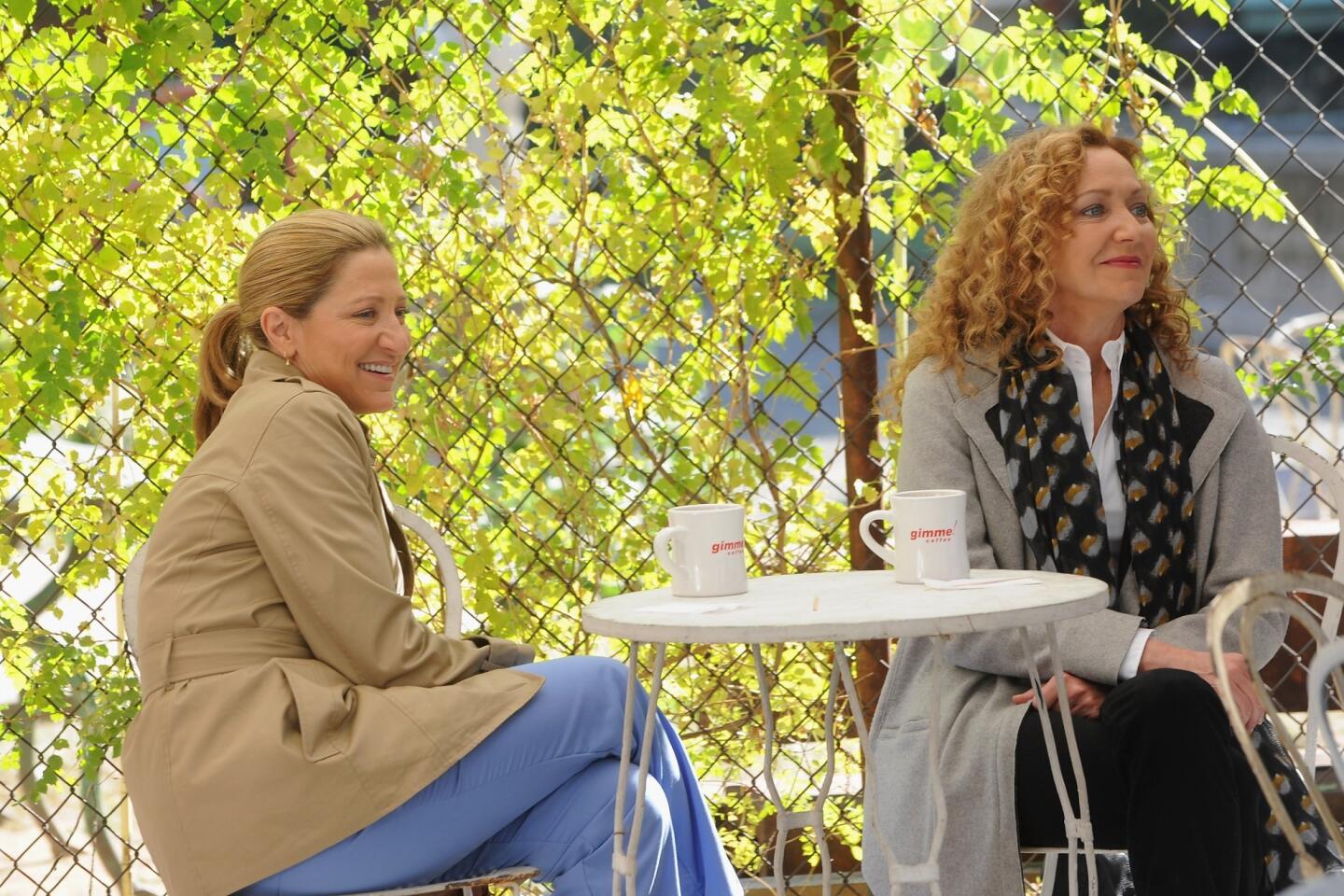Costume designer Christine Bieselin Clark crafts ‘Ender’s Game’ flash
- Share via
To fashion the costumes for Summit Entertainment’s military sci-fi film “Ender’s Game,” designer Christine Bieselin Clark used not only patterns and sewing machines but also lasers and magnets.
Crafting futuristic threads and helmets for the film, which opens Nov. 1, was “sci-fi just in its process,” she said.
Bieselin Clark, 41, began her career in a much lower-tech space: the theater. She grew up on Long Island, a stone’s throw from Broadway, earned a degree in theater arts from Stony Brook University and went on to design costumes for regional theater productions all over the East Coast. She was managing a costume shop at the College of Charleston in South Carolina when the production of 1997’s “Deceiver” came to town.
ON LOCATION: Where the cameras roll
“I threw myself at the costume department, and they brought me on as an intern,” she said. “Before I knew it, I was a paid member of the department, and that started my foray into film.”
In 1998 she sold her car and moved to Los Angeles to continue her film adventures. Since then she’s lent her vision to numerous productions, including several in the comic book and sci-fi genres.
“I spent a lot of years at Comic-Con,” said Bieselin Clark, who has worked on films ranging from 2006’s “300” to 2010’s “Tron: Legacy.” “It’s so much fun when you meet someone who’s replicated or interpreted something you’ve done.... It’s the highest form of flattery, and it’s really exciting.”
No room in the closet: In “Ender’s Game,” based on the novel by Orson Scott Card, Earth’s most talented children attend an international school where they learn to defend their planet against aliens. During simulated zero gravity battles, they wear special training outfits called Flash Suits — and Bieselin Clark made 78 of these for the film.
“We had platoons of kids every day,” she said. “Just to craft something of this scale is a challenge. It’s like a small business that we’re running once we get the designs in place. You start saying, ‘Well, we have to do all the boots at once, because then we’ll be able to cut all these pieces at the same time.’ It’s like assembly-line stuff.”
PHOTOS: Billion-dollar movie club
Growing celebrity: In one sense, the size of the cast was fixed. In another sense, it wasn’t. “These are young men who were getting taller while we were filming,” Bieselin Clark said. “The suit is two pieces: it’s a jacket and a pair of pants. And we designed the style lines of that to go higher on the body, so that if the body is growing, and the jacket rises up, there’s still more pants. And the gloves go over the top of the wrist, so if the arm continues to grow, you have about two inches of wiggle room in which the body can shift. Everything was made out of stretch materials. We used a lot of technologies that you’d use in dance fabrics. So when the body changes a little bit, you still have that dance fabric in play in those places.”
Dry clean only: Since the film is set in the future, no present-day fabric felt quite right. “The predominant fabric in the Flash Suit is one that we made,” Bieselin Clark said. Using spandex or leather as a base fabric, she layered other fabrics on top using glue, solvents and heat-fusible webbings and overlaid these with thin laminates. “It was like a crazy science experiment to combine certain ingredients to make specific fabrics for specific places on the suit,” she said. “[We also did] screen printing with rubberized inks in different colors to create surface texture.”
Head cases: Bieselin Clark designed the helmets in three parts connected by strong magnets: the main helmet, the mandible that comes around the front of the chin, and the visor. “We knew that we might get into a place where that visor and the reflections would be compromising for filming,” she said. “So that visor could come away if we needed it to not be in the shot. It’s very cool. They also had to be light enough. And we had to put little fans in them so people could breathe.”
Stranger than sci-fi: To construct the helmets, Bieselin Clark and her team took a digital scan of each actor and fed it into a computer program, which overlaid the helmet design onto the scanned head shape. They then created an output of that by using a rapid prototyping machine that lays down thin layers of resin and shapes them with lasers. “So you’re basically growing with lasers a part that perfectly fits the head of the person you’ve scanned,” Bieselin Clark said. “It’s super crazy.”
More to Read
From the Oscars to the Emmys.
Get the Envelope newsletter for exclusive awards season coverage, behind-the-scenes stories from the Envelope podcast and columnist Glenn Whipp’s must-read analysis.
You may occasionally receive promotional content from the Los Angeles Times.
